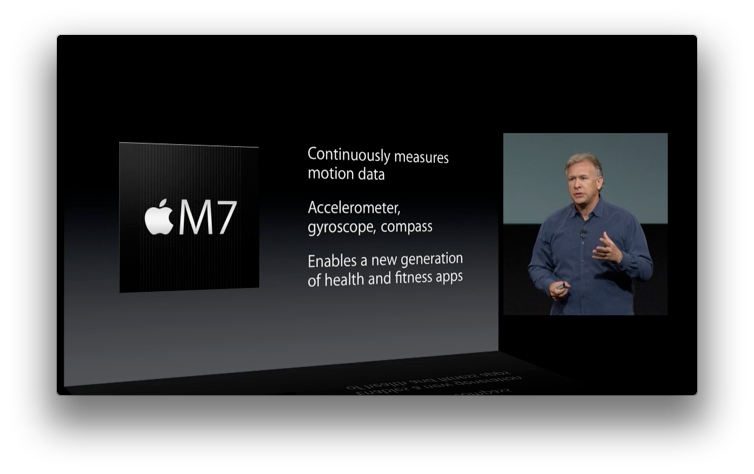- September 16, 2013
- Joe
- knowledge
- 1 Comment

Some time ago we speculated on the impact the proposed Metaio’s AR chip could have on the industry. As we said earlier, any improvement in AR is good for everybody. Lets take a brief look at the new co-processors, X8 from Motorola and M7 from Apple. All of this, from an AR point of view.
Co-processors
First and foremost, different from Metaio’s AR chip, these two new chips are generic co-processors. So, obviously they won’t focus on the AR aspect that Metaio’s is doing. That said, these two new co-processors handle many of the chores involved to make AR work in our phones, like: Accelerometer, gyroscope and compass, among many others.
The idea to make a dedicated chip (M7) or a chore of a bigger chip (X8) is to mainly save battery consumption. Where as Metaio’s proposal was to accelerate AR experience, which in the end also helped to achieve the same benefit: prolong battery life. By delegating simpler actions to simpler chips, the phone can put to idle or sleep the CPU, which consumes a significant amount of battery supplied power. At the same time these chips/chores (M7 & X8), could still offer the user some functionality while the CPU was barely working.
In the beginning, the accelerometer, gyroscope and compass were components external from the phone’s CPU, however to function they required CPU intervention, which consumes calculus (functionality) power as well as battery one, in order to achieve the magic. Now with these new co-processors, apps just need to ask the co-processors in order to obtain the same functionality that once requiered asking the CPU. It may seem silly or redundant, but by implementing this, things get simpler and more powerful on the long run.
Effects on AR
The paramount of AR is to engage without any user interaction (i.e. no need to open the apps), to achieve it, the phone needs to always be scanning, the apps by themselves will trigger the content. The problem with this proposal is that while is technically possible, it will drain the battery in a matter of hours. So, such a functionality is out of the question, at least for the moment.
However, by freeing the CPU from the previous calculus and assigning it to the co-processor, leaves the cpu free to concentrate on an even better experience, so the tax AR imposed over the phone is reduced. In short, the existence of a co-processors could mean better graphics for AR, and also faster triggering, as now there’s more power available for image recognition.
How are we getting there?
While straightforward, the AR industry still needs time to get there. Each AR SDK (Metaio, Layar, Wikitude, Vuforia, etc.) has to be re-written to acknowledge and act accordingly when a co-processors is present. On top of all that, the M7 is only present on the iPhone 5S, while on the Android side, no standard is yet defined for such a co-processors, only the Moto X (Qualcomm Inside) has such a dedicated chore. So even if current AR software takes advantage of this new functionality, it will only be available to relatively few users. Which in the end might be the reason to delay the introduction of the enhancement in the first place, classic chicken and egg situation.
In any case, as we said, any progress is good progress.
What remains to be seen is how these new co-processors will impact the adoption of Metaio’s AR chip, we hope that since it has been proven a co-processors is needed, then adoption of this AR chip is accelerated.
Related article: AR on a chip explained
